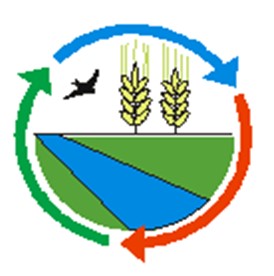Institute for Agricultural and Forest Environment, PAS

Name: Institute for Agricultural and Forest Environment, PAS
Address: ul. Bukowska 19, 60-809 Poznań, Poland
Website: http://www.isrl.poznan.pl/en/
Description:
The Institute for Agricultural and Forest Environment was established on 1 April 2009 but the history that led to its creation had begun almost two centuries earlier. In 1815, former Napoleon colonel Dezydery Chłapowski took over his father’s indebted estate in Turew and decided to introduce the modern principles of management. During the two-year stay in England and Scotland he became interested in shelterbelts which were widespread in these countries. He appreciated their anti-erosion properties and introduced the system of shelterbelts modeled on the English one in Turew. One and a half century later, General Chłapowski’s work was almost lost.
The Institute for Agricultural and Forest Environment of Polish Academy of Sciences in Poznań (former name: Research Centre for Agricultural and Forest Environment) is engaged in an integrated research of the environment of the countryside. The Institute’s scientific interests covers climate and water resources changes, extreme weather events, geochemical processes and mechanisms, biogeochemical barriers, biodiversity patterns and its dependency on habitat and landscape structure, especially in agricultural landscape, ecotoxycology, landscape structure changes in a rural area, and sustainable agricultural systems. The Institute's location in a strong academic and technological centre (Poznań) has always resulted in interdisciplinary research and cooperation between scientists and practitioners.
Disciplines: agriculture and horticulture
Fields of activity:
- analysis of environmental impacts of the agricultural sector activities, from cradle to grave of product functionality, by the methods of LCA (Life Cycle Assessment), carbon footprint and water footprint,
- relationships between biodiversity (mostly of farmland) and habitat structure, landscape structure; long-term trend analysis (for birds and insects); study on species dispersion (insects and plants) and on the use of selected species for bioindication of habitat quality;
- scientific research on climate and water systems and links between them,
- function of humus and humic acids in transport of biologically active substances in soil,
- biodiversity patterns – relationships between biodiversity (mostly in farmland) and habitat structure
Latest achievements:
The most important research achievements of the Institute are the articles published in scientific journals indexed in the Journal Citation Reports database (JCR). Many of the papers have come from science projects often involving international collaborations.
Institute participates in numerous research projects founded by European Commission, Polish ministerial grants (via National Science Centre) and Swiss-Polish Research Programme and
cooperates with the Intergovernmental Panel for Climate Change (IPCC) and International Peat Society.
Research facilities:
Modern laboratories for soils characterization; landscape structure changes, long-term trend analysis (for birds and insects, since the 1970s); communities and species distribution (plants, insects, spiders and birds) and on the use of selected species for bioindication of habitat quality; environmental pollution: ecotoxycology (in respect to birds, algae and small water bodies); phytoremediation, control of nutrient fluxes in agricultural landscape.
Contact person:
Professor Lech Wojciech Szajdak
Director of the Institute
Lech.szajdak@isrl.poznan.pl
(+48 61) 8475603
